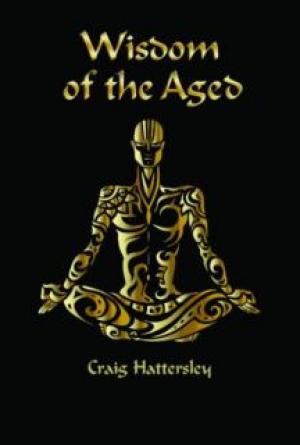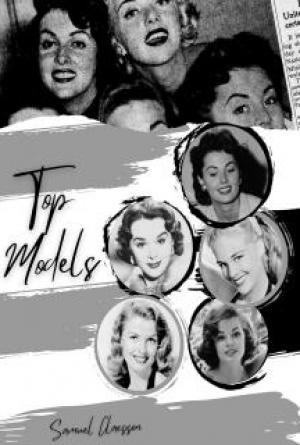FOOTNOTES
1. “Caoineadh Mhuire” (The Keening of Mary) was taken down by P. H. Pearse from the singing of Mary Clancy in Moycullen, and first published by him in the Claidheamh Soluis, October 24th, 1904.
2. Authorities: Madden’s “United Irishmen,” Third Series, Second Ed. (London and Dublin, 1860); Dr. Thos. Addis Emmet’s “The Emmet Family” (New York, 1898); J. J. Reynolds’s “Footprints of Emmet” (Dublin, 1903); Smith’s “County and City of Cork,” edited by Day and Copinger (Cork, 1893).
3. Madden, op. cit. p. 461. Madden’s account of this touching incident was furnished him by John Patten, brother of Mrs. Thos. Addis Emmet, and the devoted friend of the whole Emmet family, who was a prisoner in Kilmainham at the time of Robert Emmet’s trial and execution.
4. The trial of Robert Emmet lasted from 9.30 a.m. until 10.30 p.m. During “these thirteen hours of mortal anxiety, of exertion, of attention, constantly engaged, he had no interval of repose, no refreshment.”
5. Madden, op. cit. pp. 463-464.
6. Mrs. Milligan Fox’s “Annals of the Irish Harpers,” p. 147. It was on this occasion that Arthur O’Neill, in reply to an apologetic remark of Lord Kenmare’s concerning the place that the blind harper had found near the foot of the table, made the famous assertion: “Where an O’Neill sits, there is the head of the table.”
7. Smith’s “County and City of Cork,” I., 388.
8. Born in Tipperary in 1729, he was just thirty-one years old at the date of his marriage.
9. His great-grandson, Dr. Thos. Addis Emmet of New York, himself a distinguished specialist, records the publication of a book by Dr. Robert Emmet, in 1753, on some of the diseases of women. It was originally published in Latin and was afterwards translated into French, with two editions printed in Paris (op. cit. p. 47).
10. Grattan’s “Life and Times.” By Henry Grattan, the younger. IV. 356.
11. The identification of the house is of much interest, as it was that in which Robert Emmet was born. A writer in Georgian Society Record (IV. 94) states that it is now numbered 22, and forms portion of Kilworth House.
12. Mr. Reynolds identifies them as 124 and 125 Stephen’s Green, West. In Dr. Emmet’s time the house was numbered 109.
13. They are published at length by Dr. Thomas Addis Emmet in his “Emmet Family” (pp. 71-101). They are models of grace and style, and one wishes they were in the hands of our women who have so largely lost the old-world accomplishment of letter-writing.
14. Authorities: Moore’s “Life of Lord Edward Fitzgerald”; Campbell’s “Edward and Pamela Fitzgerald,” “Letters of Horace Walpole,” works of Mrs. Delaney, etc.
15. The title borne by the hero of the story while his father, the first Duke of Richmond, was still alive.
16. “Letters,” II., 221.
17. “Letters,” I., 85. The editor of the Walpole “Letters,” identifies the second of these girls as Lady Emily, our heroine, but it seems very unlikely, as she was only ten years old at the date of this ball.
18. Ibid., p. 146.
19. A name given by Horace Walpole to Madame de Sévigné, of whose “Letters” he was a devoted enthusiast. He sometimes calls her “Notre Dame de Livry”—Les Rochers and Livry were the names of her country seats.
20. Sir Stephen Fox was said originally to have been a choir-boy in Salisbury Cathedral. He died, after a romantic career, and having held office under four sovereigns—Charles II, James II, King William, and Queen Anne—one of the wealthiest men in England.
21. Letter to Sir Horace Mann, March 29, 1745.
22. Letter to Mrs. Dewes, November 7, 1746.
23. Afterwards Countess of Roden. The letters of Lady Emily to Miss Hamilton are in the possession of the Earl of Roden and have been published by the Marquis of Kildare in his “Earls of Kildare,” Second Addenda, 1866, p. 76 et seq.
24. Some of the pranks of this lady, which created a sensation, even in the irresponsible society of the period, are related with great verve by Horace Walpole.
25. That is an English viscount, in contrast to the “pinchbeck” of an Irish title.
26. Letter of July 29th, 1775, “Letters,” I., pp. 240-241.
27. Authorities: Madden’s “United Irishmen,” Fourth Series, Second Edition.
28. The incident of Mrs. Henry Sheares singing to her harp for the entertainment of Armstrong was related to Madden by Miss Maria Steele, the friend of John Sheares. In Curran’s “Life,” written by his son, it is stated on the authority of a gentleman who had dined with the Sheareses, on the day in question that “he observed Armstrong, who was one of the guests, taking his entertainer’s little children upon his knee, and as it was then thought, affectionately caressing them.” Armstrong denied to Madden the truth of these statements, but his denials were not considered convincing.
29. “There are two sorts of prophets—one that derives its source from real or fancied inspiration, yet are sometimes mistaken; the other class composed of persons who prophesy what they are determined to bring about themselves; of this second, and by far the most authentic class was Major Sirr.”—Curran’s “Speech in Hevey’s Trial.”
30. Authorities: “Memoir of Bartholomew Teeling,” by (his nephew) Bartholomew Teeling, Jun., B.L. in Madden’s “United Irishmen,” Third Series, Vol. I. (Dublin, 1846); Charles Hamilton Teeling’s “History of the Irish Rebellion of 1798,” “A Personal Narrative,” and Sequel to same; Unpublished Correspondence of the Teeling Family; “The Teelings,” by Albi Norman (article in Gentleman’s Magazine for October, 1905).
31. Extract from “Memoir of Bartholomew Teeling,” by his nephew, and namesake, in Madden’s “United Irishmen,” Third Series, Vol. I. (First Edition, 1846).
32. Witness the interest of Louis XIV in Madame de Maintenon’s foundation of St. Cyr, and Fénélon’s treatise on “L’Education des Filles.”
33. The statute dealing with their case runs thus: “In case any of his Majesty’s subjects of Ireland shall go or send any person to any public or private Popish school, in parts beyond the seas, in order to be educated in the Popish religion, and there be trained in the Popish religion, or shall send money or other thing towards the maintenance of such person gone or sent, and trained as aforesaid, or as a charity for relief of a religious house, every person so going, sending or sent, shall, on conviction, be disabled to sue, in law or in equity, or to be guardian, executor, or administrator, or take a legacy or deed of gift, or bear any office, and shall forfeit goods and chattels for ever, and lands for life.”—7th William III, ch. 4, s.), 1694.
34. See “Religious Songs of Connacht,” passim.
35. It is instructive to note the dates of the MSS. of Keating in the British Museum. The larger number were written during the Penal Days.
36. See “Maguires of Fermanagh,” edited by Fr. Dinneen, p. 140.
37. “Annals of Irish Harpers,” p. 179.
38. O’Heyne states that the convent was established at the end of the reign of James I. but it was only in 1644 that the church was built and a house arranged in conventural style. The foundation was confirmed by Rinuccini in 1647.
39. Admirably edited by Rev. Ambrose Coleman, O.P., who has contributed an Appendix full of the most valuable historical information (Dundalk, 1902).
40. Memoir of Mother M. Catherine Plunkett, compiled from the Archives of Sienna Convent, Drogheda, very kindly furnished me by Mother Prioress and Community.
41. The date has only been arrived at by inference. She was married in 1771, and we know from her grandson’s narrative that she was considered to have married early, say about eighteen. Her mother died in 1753, which set a posterior limit to her conjectured birth year.
42. It would be quite in his way if we are justified in assuming that the route taken by Thomas Molyneux in 1707 was the ordinary one.
43. These particulars concerning the Teeling family are taken from an excellent article in The Gentleman’s Magazine (October, 1905), by a writer signing himself “Albi Norman.”
44. He was M.P. for Belfast, Solicitor General and Baron of the Exchequer (D’Alton’s “History of County Dublin,” p. 477).
45. D’Alton, op. cit., p. 468.
46. “Tour in Ireland,” Vol. I.
47. Luke Teeling was looked on as a remarkably good judge of a horse, and I find among the family papers not a few in which his friends seek his advice on that all important subject.
48. They were both apprenticed in the linen trade. Bartle with his father, and George with the MacDonnells in Dublin.
49. The first Orange lodge was formed on September 21, 1795, at the house of a man called Sloan, in the village of Loughgall, Co. Armagh.
50. James Hope says that in reality what the Orangemen aimed at was to get the farms of the Catholics who had recently, by their industry in the linen trade, acquired the means of renting desirable farms.
51. In the Castlereagh papers the assumed name of B. Teeling is stated to have been Byrne.
52. “The Postlethwaite Tender, on which my father was confined, contained within the limits of one small apartment, thirty-four gentlemen, of respectable rank in life and independent circumstances. In this miserable prison-house, its inmates could never stand erect, and crowded together in a circumscribed space not fourteen feet square, they could only enjoy a partial and unrefreshing slumber in succession. Here, entombed on the ocean, during the sultry heat of a summer the most oppressive that has been remembered for thirty years, they inhaled the pestiferous atmosphere of a tender; in the depth of winter, when their numbers were reduced to a few, they were exposed with open port-holes to all the inclemency of the chilling blast. Nor were they permitted to receive a supply of wholesome food from their friends; nothing was allowed them beyond what the parsimonious bounty of Government afforded. At four o’clock in the evening the hatches were locked down, and the prisoners remained in darkness until nine on the following morning. Sometimes, forgetful of his situation, the prisoner would raise his form to stand erect ... when the hard repelling beam, in contact with his head, reminded him that the hand of man had prescribed his limits. My father, whose fine-formed head and silver locks are still present to my imagination, presented on his removal from this prison, a perfect encrustment of festered wounds from forehead to nape.”—C. H. Teeling’s “Narrative.”
53. Authorities: “Autobiography of Wolfe Tone,” edited by R. Barry O’Brien; Madden’s “United Irishmen,” Second Series, Second Edition, 1848.
54. “Autobiography of Wolfe Tone,” pp. 14, 15.
55. “Autobiography,” p. 19.
56. “Autobiography,” p. 29.
57. “Autobiography,” pp. 29, 30.
58. “Autobiography,” pp. 50, 51. Pearse held “all Irish Nationalism to be explicit in these words. Davis was to make explicit certain things here implicit, Lalor certain other things; Mitchel was to thunder the whole in words of apocalyptic wrath and splendour. But the Credo is here: ‘I believe in One Irish Nation and that Free.’”—(“Ghosts,” p. 16.)
59. “Argument on behalf of the Catholics of Ireland.”
60. “Autobiography,” p. 50.
61. “Autobiography,” p. 66.
62. In the “Memoirs of the Clerk of the Parish,” Swift parodied Bishop Burton’s “History of His Own Times.”
63. We have, among a host of other witnesses on this point, Charles Hamilton Teeling, himself a man of the finest courtesy, most fastidious sense of honour and highest breeding. When Lord Castlereagh, on the day of his own arrest, informed him that Russell was also among those arrested, Charles exclaimed: “Russell! then the soul of honour is captive.” (“Personal Narrative,” p. 19). He tells further on how Russell, when the prisoners were brought to Judge Boyd’s house for their committment, was pained by Neilson’s levity. “No man regarded etiquette and the punctilios of politeness more. He looked solemn, stroked up his fine black hair, and with a sweetness of countenance peculiarly his own, and in a gently modulated but sufficiently audible tone of voice he begged of his friend Neilson to respect the dignity of the Bench.” Russell was a deeply religious character, with that combined humility, consciousness of his own weakness, and striving after perfection which is the foundation of saintliness. There is nothing nobler, more touching, or more edifying in our history than the story of how he went to his death.
64. Froude, “English in Ireland,” III., 19.
65. “Autobiography,” p. 212.
66. “Autobiography,” p. 217.
67. William had then reached the mature age of six, and Frank was a year younger.
68. One of the favourite games in the family circle was matching and identifying quotations. Tone’s Journal is full of them.
69. This was the name under which Tone served in the French army.
70. Authorities: Madden’s “United Irishmen” (Third Series, Second Edition); Dr. T. A. Emmet’s “Emmet Family.”
71. “The Emmet Family,” pp. 64-65. The seal, which was designed by Robert Emmet, and is still in the possession of the Emmet family, was carried by Mrs. T. A. Emmet on her person during the whole time Government was in search of it.
72. Madden’s “United Irishmen” (Second Edition), Third Series, pp. 51-53. Madden learned these particulars from Jane Emmet’s children in America, and her brother John Patten.
73. After peace was signed at Amiens in March, 1802. Their imprisonment was changed for banishment.
74. Thomas Addis Emmet told Colonel Dalton who had been sent to open up negotiations with him on behalf of the French Government in May, 1803, that “France had lost the confidence of Ireland, and the treatment the Irish had received in France, ever since the peace ... had excited even an aversion.” It is well known that Emmet described Bonaparte “as the worst enemy Ireland ever had.” So much for French friendship for Ireland, about which certain people would have us so enthusiastic!
75. Dr. Thomas Addis Emmet informs us that “nothing is now known of this portrait.” The two portraits reproduced in his own book were by her daughter Elizabeth, Mrs. Le Roy.
76. Authorities: Madden’s “United Irishmen,” Fourth Series, Second Edition.
77. Published in Young’s “Historical Notices of Old Belfast,” p. 169, et seq.
78. Teeling’s “Personal Narrative,” pp. 29, 30.
79. Authorities: Madden’s “United Irishmen” (Second Series, Second Edition;) Moore’s “Life of Lord Edward Fitzgerald”; Gerald Campbell’s “Edward and Pamela Fitzgerald”; Harmand’s “Madame de Genlis”; various works of Madame de Genlis, including “Mèmoires,” “Adèle et Théodore,” “Leçons d’une Gouvernante à ses Élèves,” etc.
80. It has been pointed out by Madden that in the civil marriage contract of Pamela and Lord Edward, the bride’s father is stated to have been a William Berkley, while in the religious contract of the same date (Tournai, December 17th, 1792) Pamela is entered as the daughter of William de Brixey.
81. The name Pamela was borrowed by Madame de Genlis, who was an enthusiastic admirer of the novels of Samuel Richardson, from the heroine of the most famous of them.
82. Moore tells us that Lord Edward first introduced this style of vehicle into Ireland.
83. Née Cecilia Ogilvie, daughter of the Duchess of Leinster by her second marriage.
84. Authorities: Madden’s “United Irishmen” (Vol. II., Second Series, First Edition, 1843); Robert M. Young, “Historical Notices of Old Belfast,” 1896.
85. “Under the Cedars and the Stars,” p. 192.
86. An affidavit preserved in the McCracken MSS. proves that “the first piece of muslin ever woven” in Belfast or its vicinage was woven by Thos. Burnside for John McCracken in January, 1779.
87. Principally those of Matilda Tone and Anne Neilson.
88. See “Annals of the Irish Harpers,” passim.
89. F. J. Bigger, Esq.
90. Madden’s “United Irishmen,” Third Series (Second Edition). p. 91.
91. “The Emmet Family,” p. 54. The circumstances of Mary Anne Holmes’s death were communicated to Dr. T. A. Emmet by Sir Bernard Burke.
92. Mrs. Beauclerck was Lord Edward’s half-sister, “Mimi” (Emily Charlotte) Ogilvie, daughter of the Duchess of Leinster and Mr. Ogilvie.
93. Mrs. Smith (Miss Maria Steele) told Dr. Madden that she had often heard John Sheares say with great emotion “that he had caused the death of two of his brothers—Robert, who was drowned in saving him when a boy, and Christopher, who, being reluctant to go to the West Indies, he persuaded to go there, “only to perish of yellow fever.”
94. Sarah, the wife of Henry Sheares. When John wrote he had no suspicion that his brother’s fate was sealed as well as his own.
95. His daughter.
96. The Teelings conspicuously. Her own father, Mr. Walsh, of the Naul, though like Mr. Teeling he had taken no part in the Rising, was ruined by the pillaging and burning tactics of the Orangemen and the Yeomanry.
97. Quoted by Madden from article entitled “Some Passages in the History of Sarah Curran,” in “Literary Souvenir” of 1831. The writer is believed to have been a lady of the Crawford family, who were intimate friends of Sarah and her people.
98. MacDonagh: “Viceroy’s Post-Bag,” p. 342 et seq.
99. Is this the black velvet stock with the lock of hair, marked Miss C., attached to it which Madden says was sold at Russborough’s auction in “the thirties”?
100. Madden believes that the name indicated by the blank was that of his brother-in-law, Robert Holmes. But it seems from other references more likely to have been Councillor Burton—Curran’s clerk.
101. His mother, Lady Harriet Wentworth, sister to the Marquis of Rockingham, had married her footman.
102. Dr. Madden has with delicate reticence veiled his own charity to Anne Devlin. It was during one of his absences abroad that she was lost sight of immediately before her death. The gentleman “of the name of Meehan” referred to in poor Anne’s landlady’s statement was Rev. C. P. Meehan, the historian. Father Meehan, Edward Kennedy (Miles Byrne’s half-brother), and Dr. Madden—let us remember their three names with gratitude, because out of their own scanty means, they tried to save the Irish nation from the disgrace of allowing Anne Devlin to die of hunger.
103. Hampden Evans was an exile of ’98.







